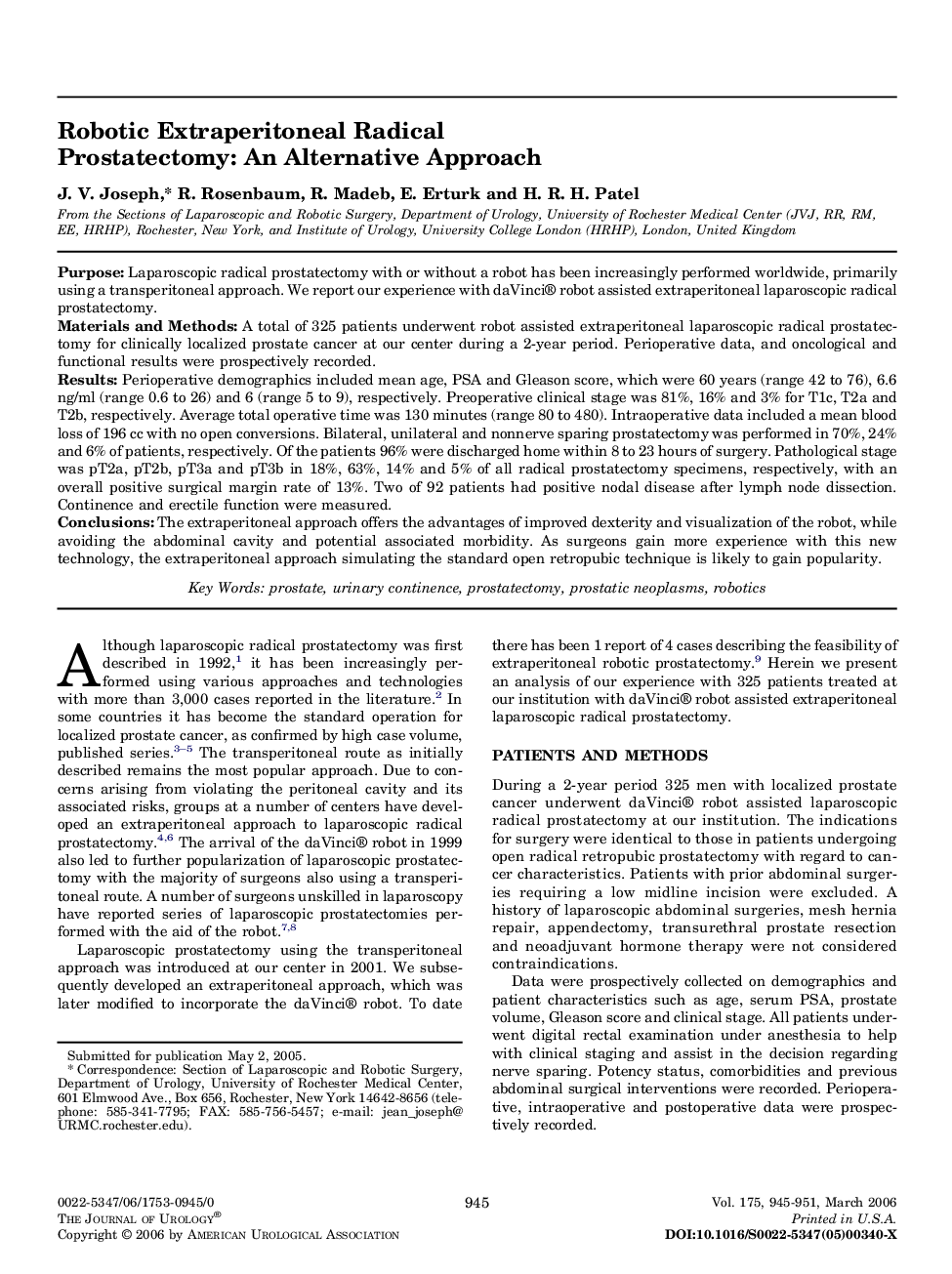| Article ID | Journal | Published Year | Pages | File Type |
|---|---|---|---|---|
| 3877313 | The Journal of Urology | 2006 | 7 Pages |
PurposeLaparoscopic radical prostatectomy with or without a robot has been increasingly performed worldwide, primarily using a transperitoneal approach. We report our experience with daVinci® robot assisted extraperitoneal laparoscopic radical prostatectomy.Materials and MethodsA total of 325 patients underwent robot assisted extraperitoneal laparoscopic radical prostatectomy for clinically localized prostate cancer at our center during a 2-year period. Perioperative data, and oncological and functional results were prospectively recorded.ResultsPerioperative demographics included mean age, PSA and Gleason score, which were 60 years (range 42 to 76), 6.6 ng/ml (range 0.6 to 26) and 6 (range 5 to 9), respectively. Preoperative clinical stage was 81%, 16% and 3% for T1c, T2a and T2b, respectively. Average total operative time was 130 minutes (range 80 to 480). Intraoperative data included a mean blood loss of 196 cc with no open conversions. Bilateral, unilateral and nonnerve sparing prostatectomy was performed in 70%, 24% and 6% of patients, respectively. Of the patients 96% were discharged home within 8 to 23 hours of surgery. Pathological stage was pT2a, pT2b, pT3a and pT3b in 18%, 63%, 14% and 5% of all radical prostatectomy specimens, respectively, with an overall positive surgical margin rate of 13%. Two of 92 patients had positive nodal disease after lymph node dissection. Continence and erectile function were measured.ConclusionsThe extraperitoneal approach offers the advantages of improved dexterity and visualization of the robot, while avoiding the abdominal cavity and potential associated morbidity. As surgeons gain more experience with this new technology, the extraperitoneal approach simulating the standard open retropubic technique is likely to gain popularity.
